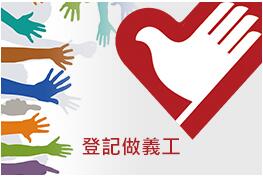About Rare DiseasesRare Disease Wiki

Cardiofaciocutaneous Syndrome
Name of disease:
Cardiofaciocutaneous SyndromeICD-10 diagnosis code:
Q87.8Causes:
Most cases of cardiofaciocutaneous syndrome (CFC syndrome) are sporadic, which means they occur in people with no history of the disorder in their family It is caused by new mutation in one of four genes called BRAF, MAP2K1, MAP2K2, and KARS.
Mode of inheritance:
Although CFC syndrome can have an autosomal dominant pattern of inheritance, it rarely runs in families.
Prevalence:
Unknow in the world or 1/ 810,000 in JapanDiagnosis:
Most cases of CFC syndrome can be diagnosed during infancy based on clinical evaluation and physical findings Patients’ heart may be involved, and stethoscope evaluation, electrocardiography or X-ray can be used to evaluate the heart condition.
Age of onset:
Children and adultCommon signs and symptoms:
Sparse, brittle, curly hair Narrowing of the sides of forehead Intellectual disability Failure to thrive Congenital or acquired heart failure Short stature Skin abnormalities Increased distance between eyes Uneven alignment of eyes Involuntary eye movement Feeding problems such as gastroesophageal reflux
Available treatments (medicinal and non-medicinal):
Current treatment is mainly directed towards the symptoms of CFC syndrome. For example, patients with congenital heart defects can be treated with medications or surgical intervention.
Disease management tips:
The management of patients with CFC syndrome requires an experienced, multidisciplinary approach to tackle the signs and symptoms of CFC syndrome. If patients have a respiratory infection, it should be treated immediately because such infection may increase the risk of infection of heart lining, which exaggerates the congenital or acquired heart defect. Due to feeding problems such as gastroesophageal reflux, feeding with feeding tubes can be considered. Fiber intake can be increased if the patients suffer from constipation, which may arise from feeding tube. Lubricants or ointments can be applied to alleviate skin abnormalities. Children with CFC syndrome shall receive intervention from speech therapy, occupational therapy and physical therapy as early as possible for reaching their potential.
References:
https://rarediseases.org/rare-diseases/cardiofaciocutaneous-syndrome/ https://rarediseases.info.nih.gov/diseases/9146/cardiofaciocutaneous-syndrome
Other useful websites:
More about the disease: https://medlineplus.gov/genetics/condition/cardiofaciocutaneous-syndrome/ Patient groups: Cardio-Facio-Cutaneous Internationalhttps://www.cfcsyndrome.org



